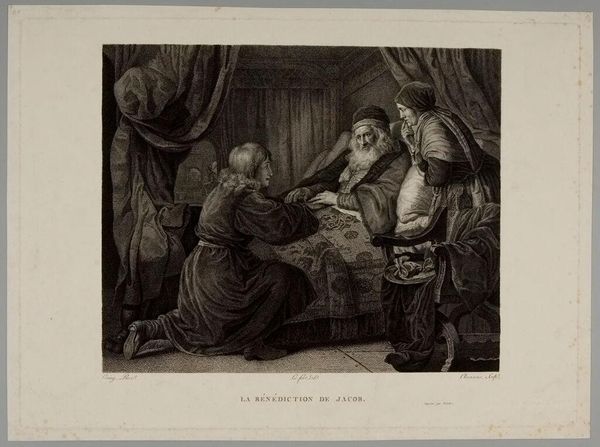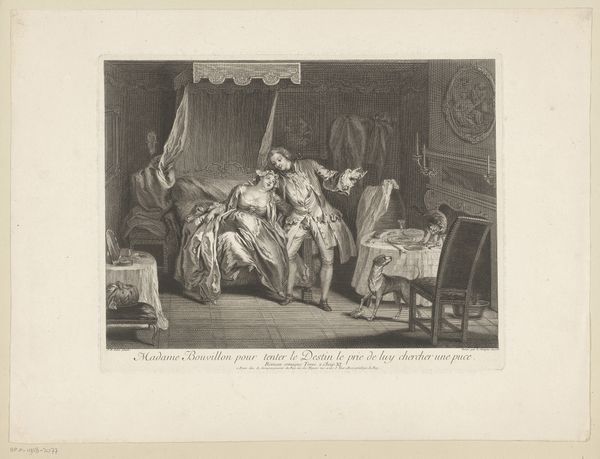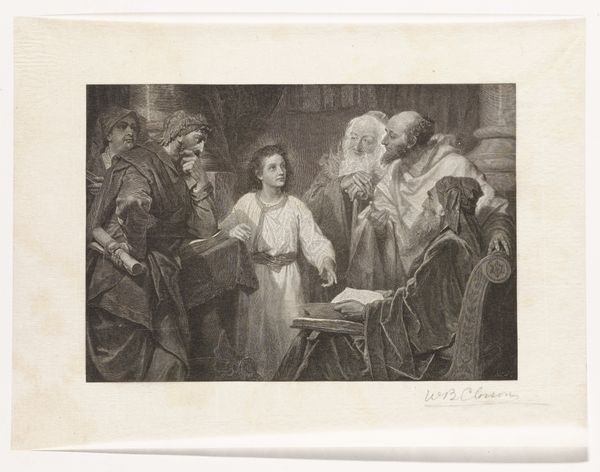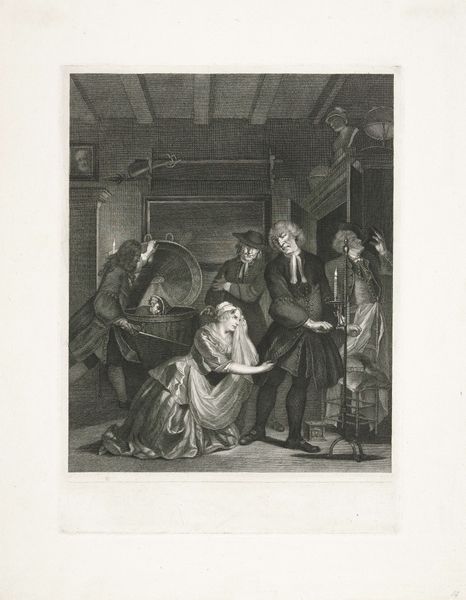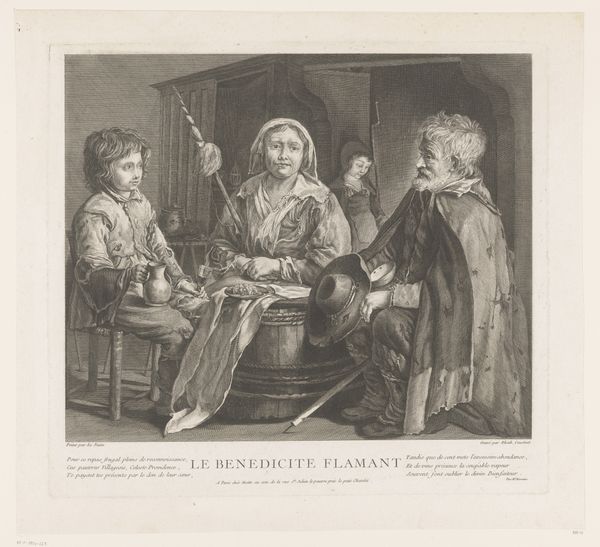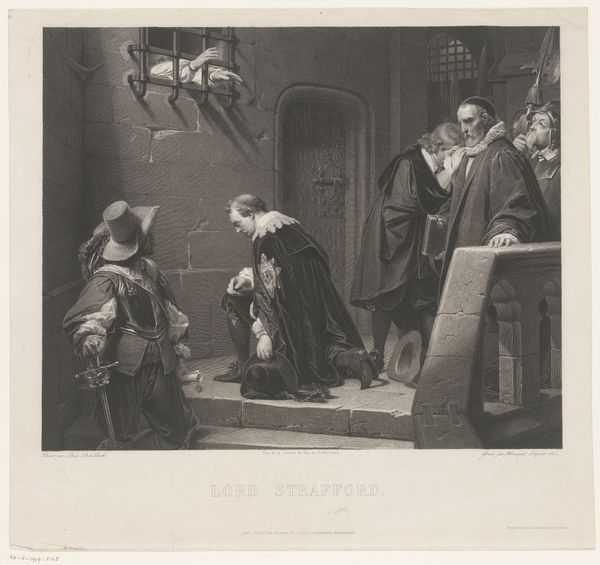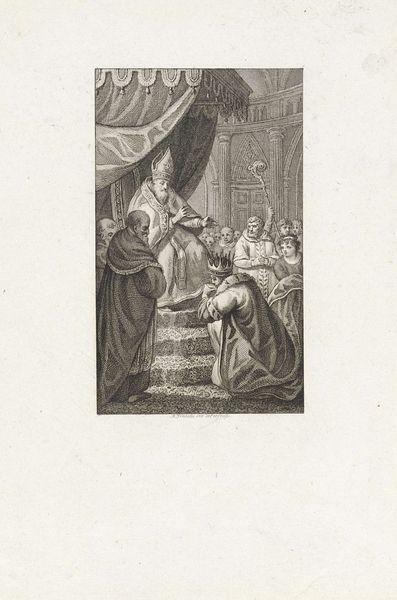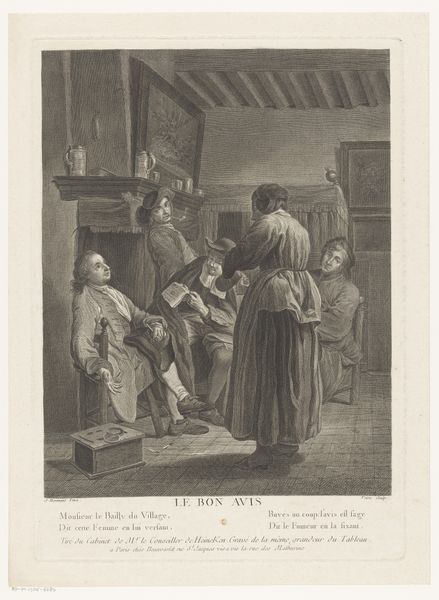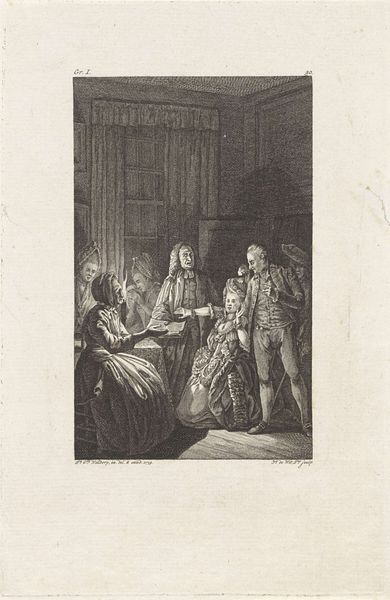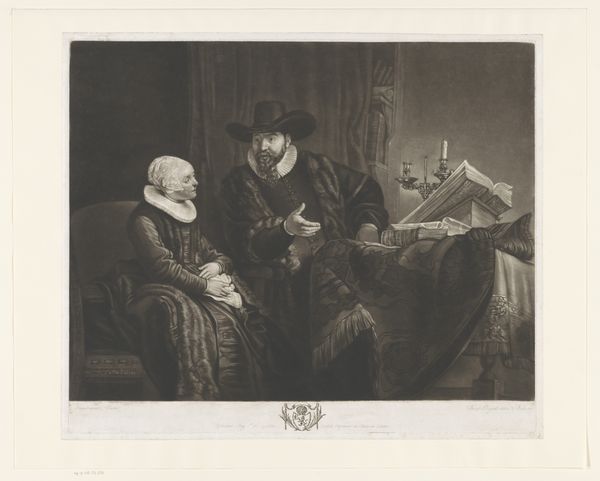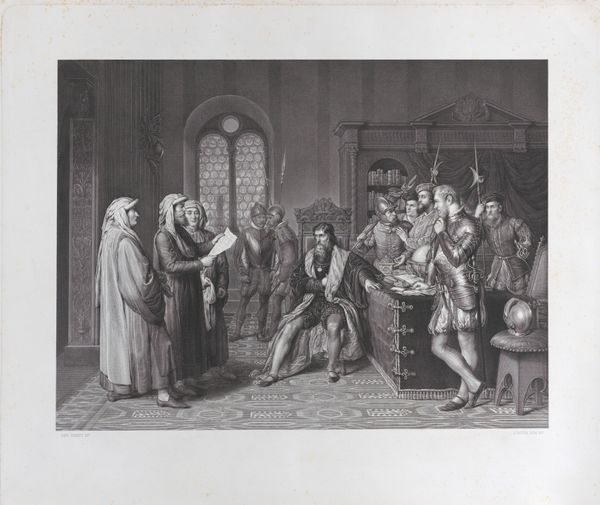
drawing, engraving
#
portrait
#
drawing
#
narrative-art
#
charcoal drawing
#
portrait reference
#
19th century
#
history-painting
#
engraving
Dimensions: height 303 mm, width 328 mm
Copyright: Rijks Museum: Open Domain
Editor: Here we have Lambertus Antonius Claessens’s “Izaak zegent Jakob,” an engraving from around 1829-1834. The scene feels so intimate, yet theatrical at the same time. What strikes you most about this piece? Curator: This work immediately brings to mind the performative nature of identity, particularly in relation to power and deception. Consider the biblical narrative—Jacob disguising himself to steal his brother Esau’s blessing. How does Claessens visually represent this complex dynamic of familial ambition and divine favour, especially through the lens of gender and social roles of the time? Editor: So you see Jacob’s deception as a performance, a strategic manipulation? Curator: Absolutely. Look at the staging of the scene: the bed as a kind of altar, the surrounding figures as both witnesses and accomplices. It encourages us to consider how social constructs of masculinity and inheritance intertwine with religious doctrine to create and perpetuate societal hierarchies. The figures' posture also seems rather important. What do you make of that? Editor: I notice the way Jacob is kneeling— it shows subservience, but perhaps also hints at his manipulative intentions, considering what's at stake in the scene. The body language creates this tension. Curator: Precisely. And consider the patriarchal implications. Who is granted the authority to bestow blessings? How are those blessings tied to land, wealth, and lineage? This isn't simply a historical image; it is a coded map of societal structures we can critically evaluate today. What do you take away from understanding these layers? Editor: I guess I'll never see a simple "historical artwork" the same way again. Thinking about how art reflects and shapes social norms is eye-opening. Curator: Indeed, by engaging with the social context of this piece, we also become active participants in re-evaluating the power dynamics that are still present.
Comments
No comments
Be the first to comment and join the conversation on the ultimate creative platform.

